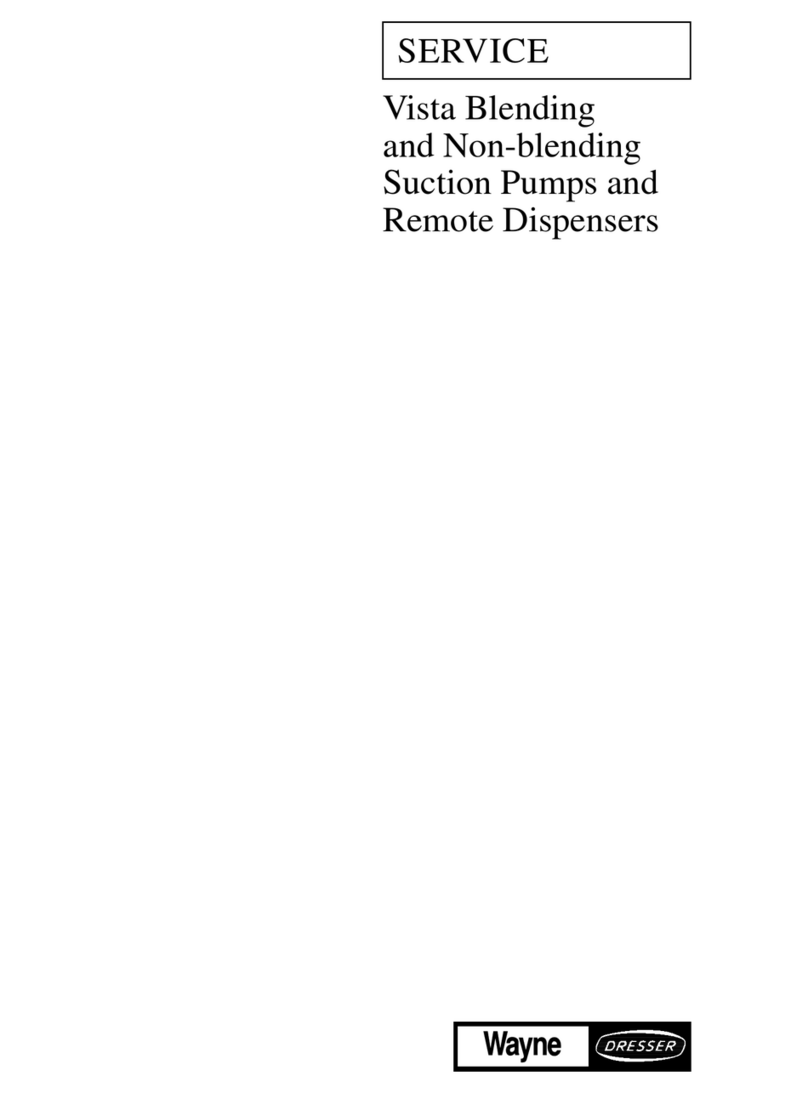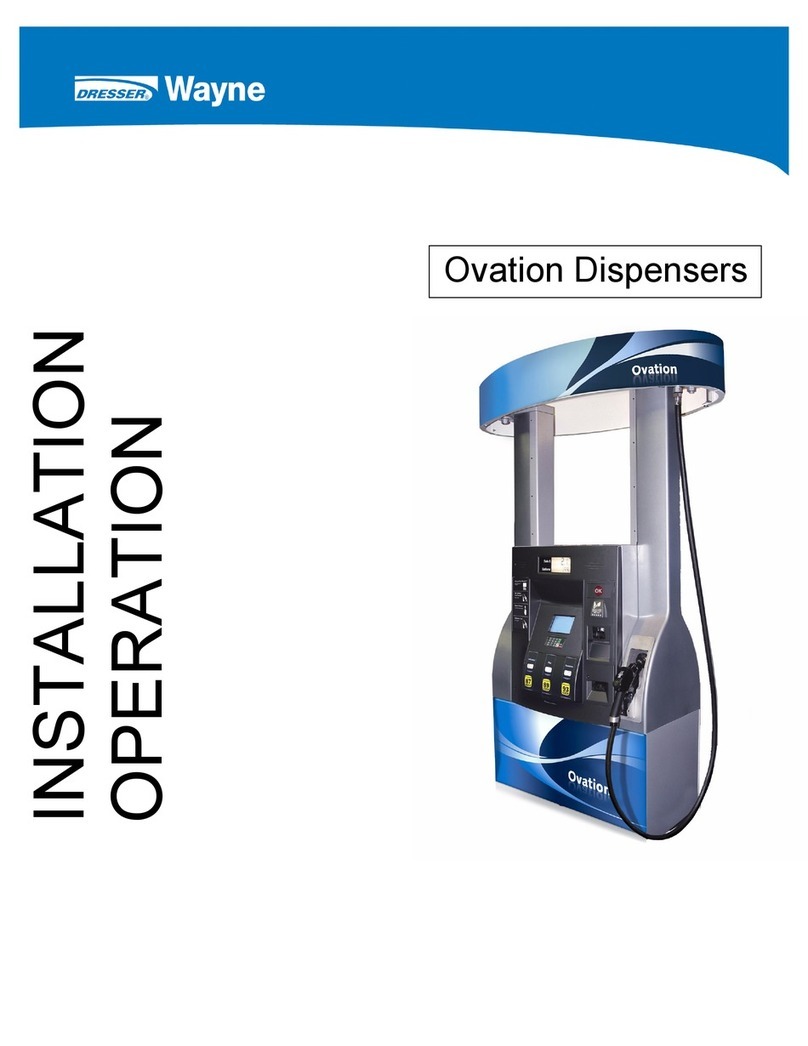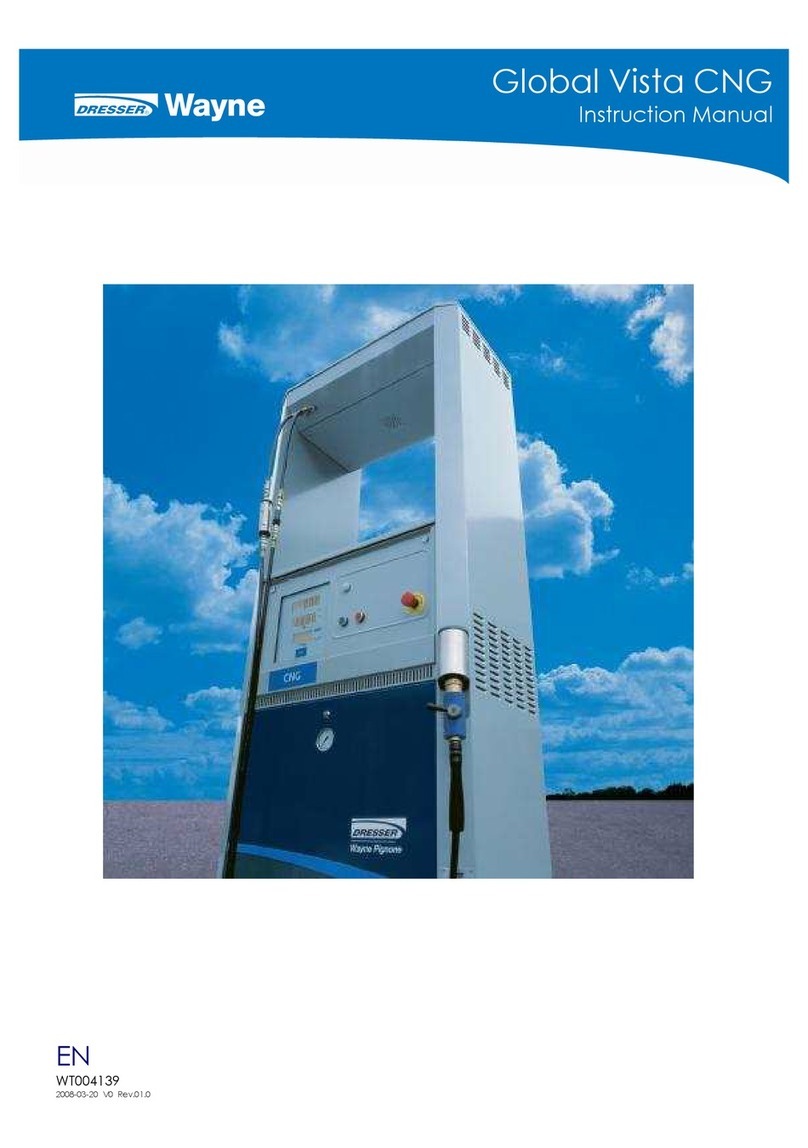
920943 Rev E July 2014 3
1.3 Technical Information
Application: For dispensing low viscosity petroleum fuels - diesel, including biodiesel
blends up to 20%; kerosene; gasoline, including standard oxygenated
blends; AvGas; and jet fuel (check with fuel supplier for any metal flow
path restrictions for AvGas and jet fuel, you must install the appropriate
filters, water separators, etc. needed for the fuel type being used.) - from
aboveground or underground storage tanks in applications where only
volume measurement is required. Dispensers with the “E” Prefix utilize
nickel-plating, hard anodizing, stainless steel, black iron piping, special
elastomers and a special fuel filter. While standard dispensers are Listed
to handle Ethanol products up to an E10 blend, “E” prefix dispensers are
Listed for use with products up to E85. Use hanging hardware rated for
the available fuel type dispensed. Note: Dispenser has not been evaluated
for Biodiesel (up to 20%), AvGas and Jet Fuel by UL.
Performance: Up to 22 GPM (83 LPM) maximum test rate. Actual flow rates will depend
upon the installation conditions, dispenser accessories, and the size of the
submersible pump.
Register: Veeder Root VR101, 4-wheel, non-computer. Displays on one side of
dispenser. U.S. gallons measure standard. Optional liter measure. Non-
resettable accumulative totalizer displays up to 9999999.9 on primary
side.
Reset Veeder Root electric reset. 120VAC, 50/60 Hz standard. Optional
240VAC, 50/60 Hz.
Meter: Wayne 2PM 2-piston meter. Adjustable calibration.
Junction Box: Explosion-proof AC junction box standard for power, reset complete,
submersible connections, and optional pulser.
Strainer: 120-mesh; removable for cleaning.
Filter: Optional external filter adapter with standard 10-micron filter element.
(Note: User should make sure the element meets the application and replace with
the appropriate element as necessary.)
Inlet: 1 ½” (3.8cm) NPT.
Outlet: 1” (2.5cm) NPT. ¾” (1.9cm) reducer bushing supplied for ¾” hose
assemblies.
Flow Control Valve: 1” (2.5cm), 2 stage (1 stage on E Prefix models), 120 VAC Valve.
Standard.
Cabinet Galvannealed steel. Hinged front and rear doors. Optional Stainless
Steel.
Finish: Silver powder coat finish with blue powder coated doors. Optional black,
green, red, silver, white, or yellow powder coated doors.
Nozzle Boot and
Hook Fits standard U.L. interchangeable automatic nozzles. Works with Emco
Wheaton A4015 short spout and Husky V balance vapor recovery short
spout nozzles without modifications.
Options: 10:1 or 100:1 pulser on Volume, external filter, hose mast, and stainless
steel panels and doors. Shelf bracket.
International Options: 230VAC Hz operation (valve/reset) and 50 Hz
operation and liter measure.
Hose and Nozzle
Accessories: Not included.
Approvals: Underwriter’s Laboratories C-UL-US Listed. Note: CUL Listing does not
cover E85 Listings.
































